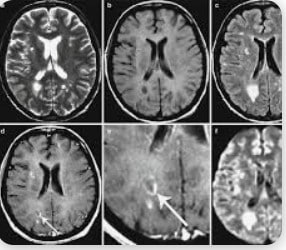
Medically reviewed by Susan W. Lee, DO — Written by Heather Hobbs — Updated on January 29, 2025
Demyelination refers to damage to the myelin around nerves. Myelin coats many nerves in the body, but it can become damaged due to inflammation from viral infections, autoimmune diseases, and other causes.
Nerves send and receive messages from every part of your body and process them in your brain. They allow you to:
- speak
- see
- feel
- think
Many nerves are coated in myelin, a fatty tissue that helps protect them and help them work properly. When it’s worn away or damaged, nerves can deteriorate, causing problems in the brain and body.
Damage to myelin around nerves is called demyelination. Demyelination can cause issues like:
- numbness
- weakness
- vision changes
- cognitive changes
- behavioral changes
- difficulties with movement
Keep reading to learn about demyelination, its types and causes, and how doctors diagnose and treat demyelinating diseases.
What does myelin do?
Myelin surrounds and protects parts of your nerves. It also supports their function.
Nerves
Nerves are made up of neurons. Neurons are composed of:
- a cell body
- dendrites
- an axon
The axon sends messages from one neuron to the next and connects neurons to other cells, such as muscle cells.
Some axons are extremely short, while others are 3-feet long. Axons are covered in myelin. Myelin protects the axons and helps carry axon messages as quickly as possible.
Myelin
Myelin is made of membrane layers and covers an axon. This is similar to the idea of an electrical wire with a coating to protect the metal underneath.
Myelin allows a nerve signal to travel faster. In unmyelinated neurons, a signal can travel along the nerves at about 0.5 to 10Trusted Source meters per second, while in a myelinated neuron, it can travel up to 150 meters per second.
Certain medical conditions can damage myelin. Demyelination slows down messages sent along axons and causes the axon to deteriorate.
Stay informed with MS news and information - Sign-up here
For MS patients, caregivers or clinicians, Care to chat about MS? Join Our online COMMUNITY CHAT



